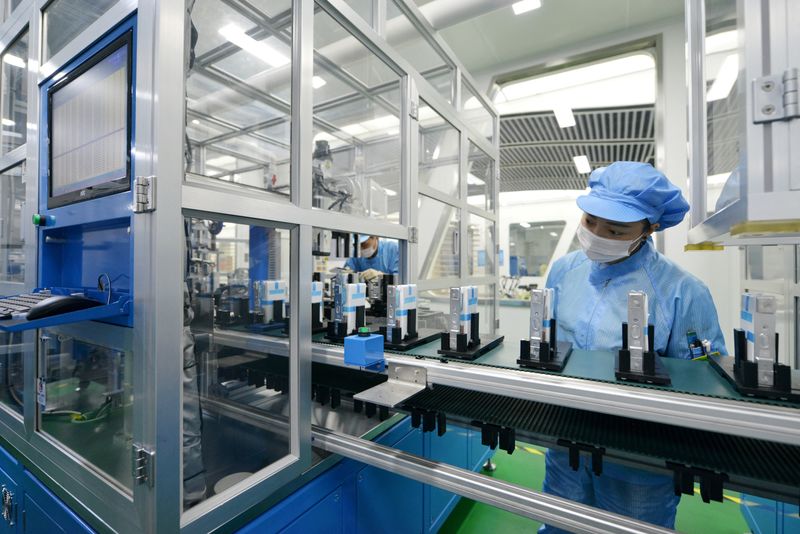Analysis-Lithium experts skeptical on success of Mexico’s state-run miner
2022.08.26 22:25

FILE PHOTO: Workers are seen at the production line of lithium-ion batteries for electric vehicles (EV) at a factory in Huzhou, Zhejiang province, China August 28, 2018. REUTERS/Stringer ATTENTION EDITORS – THIS IMAGE WAS PROVIDED BY A THIRD PARTY. CHINA
By Sarah Morland and Noe Torres
MEXICO CITY (Reuters) – Mexican officials hope a newly created state-run lithium company will catapult the country to the vanguard of the green energy revolution, but industry experts told Reuters hefty costs and international indifference are likely to stymie those plans.
Mexican President Andres Manuel Lopez Obrador nationalized the country’s vast lithium deposits in April, hoping to cash in on surging demand for the metal from makers of electric vehicle (EV) batteries.
Obrador’s government says it is unsure of the exact value of Mexico’s lithium deposits but has cited past estimates they could be worth more than four times Mexico’s foreign debt, which Refinitiv data put at $215.77 billion in June.
The government expects the state miner to launch within six months, but has given little detail on how it will operate.
Lithium is typically extracted from hard rock or brines, but Mexico’s lithium is found mostly in clay deposits, from which the metal has never been extracted commercially, and industry experts doubt Mexico can do so without private expertise.
Bolivia, which has the world’s largest lithium resource, has tried and failed for years to commercially produce lithium using its state-owned firm.
“We’re counting our chickens before they’re hatched,” Jaime Gutierrez, the president of Mexico’s mining association, told a conference this week.
The association had earlier warned of limited information about the country’s lithium deposits, and said exploration and mine development could weigh heavily on public finances.
China’s Ganfeng has been developing Mexico’s largest lithium project at a clay deposit in Sonora. Ganfeng hopes the Sonora mine will produce 35,000 tonnes of lithium per year – a figure that would hurtle Mexico into the ranks of major international players. Ganfeng did not respond to requests for comment about how the nationalization plan would affect it.
Lithium output and resources around the world: https://tmsnrt.rs/3chtM2B
The government has been reviewing contracts with Ganfeng and others, and is also looking at producing lithium from a geothermal plant on the Baja California peninsula and the semi-desert region in the country’s center.
The U.S. Geological Survey estimates that Mexico’s lithium resources rank in the top 10 globally, though reserves in Chile and Argentina are better understood and thus attracting more investment. In geology, resources are a general estimate and differ from reserves, which indicate the amount of a metal that could be commercially produced.
BTG Pactual analyst Cesar Perez estimated it could take Mexico’s state firm at least seven years to begin production.
Though rising demand should eventually draw industry to Mexico’s lithium, analysts fear that with existing technology it will be too expensive to mine the lithium commercially.
Independent industry consultant Chris Berry said state intervention would likely scare away private capital, pointing to a plan from CATL, the world’s largest biggest maker of EV batteries, to build a battery factory somewhere in North American.
“Would CATL be willing to build a factory in Mexico if they knew they’d be answering to the Mexican government? Unlikely,” Berry said.
A small Mexican lithium-ion battery company, though, says it is eager for Mexico to begin lithium production.
Giovanni de Luna, who founded Luna Lithium Battery a year and a half ago, said he hoped Mexico can mobilize its reserves quickly amid soaring prices.
“Mexico has the capacity, but we are just starting out,” he said.








